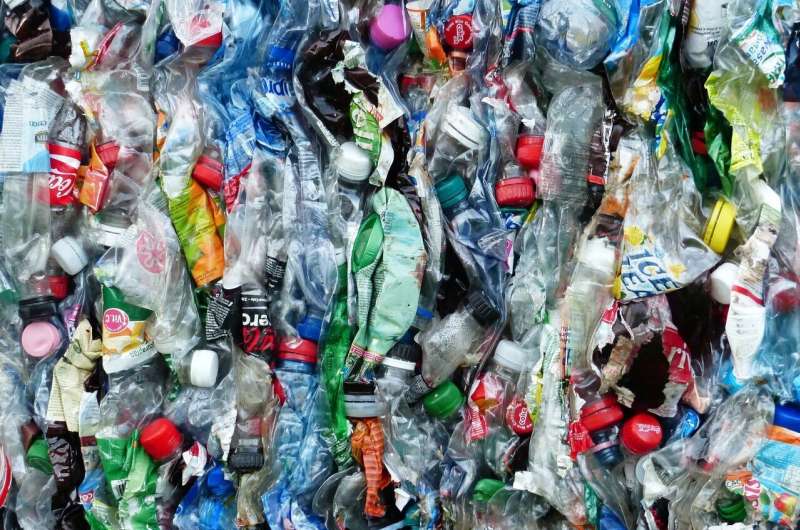Why algae can be our next secret weapon to combat plastic pollution

Plastic pollution has become an alarming problem worldwide. A 2015 study published in Science Magazine projected that by 2025, around 100–250 million metric tons of plastic waste could enter our oceans every year.
The problem also triggered the United Nations (UN) to issue a global resolution to end plastic waste, adopted by representatives from 173 countries.
However, even if all drastic measures were put in place to stop plastic production tomorrow, we would still have around 5 billion tons of plastic waste in landfills and the environment.
Research has shown that plastic can disintegrate into microplastic—particles ranging from 1 nanometer (nm) to less than 5 micrometers (mm)—with various shapes, densities, and mechanical and chemical properties.
Due to their small volume and high surface area, microplastics can absorb pollutants, causing chronic toxicity when consumed and accumulated within organisms.
For decades, scientists have been looking to nature for our fight against the plastic problem. Combined with global strategic action to slow down plastic production, we could prevent future plastic disasters.
Microalgae, for instance, are the most promising nature-based candidate capable of destroying microplastics. It is a unicellular species that exists individually or in chains or groups. Depending on the species, their size can range from a few millimeters to hundreds of micrometers.
Cultivating microalgae is simple because it does not require fertile land, large quantities of freshwater, and pesticides compared to other aquaculture crops.
Microalgae are also capable of growing rapidly. Open pond cultivation has been one of the oldest and simplest ways to cultivate microalgae on a large scale. Some people also use photobioreactors—bioreactors used in an enclosed system to increase microalgae cultivation.
How microalgae works
Interaction between microalgae and plastic can significantly change the properties of plastic, including its biodegradation, the alteration of plastic density, and sinking behavior. Moreover, microalgae may take control, gather, and stick to microplastics on their surface, regardless of their size.
There are four stages of plastic biodegradation. First is the attachment of microalgae to plastic surfaces. This starts the biodegradation process and alters surface properties.
The second is biodeterioration. Microalgae will secrete specific enzymes, which are pivotal for plastic biodegradation.
The third is the biofragmentation process. In this stage, the plastic material loses its mechanical stability and becomes fragile.
The last stage is the assimilation process, where microbial filaments and water start to penetrate plastics, which results in the decomposition and utilization of plastic by microorganisms.
Studies have reported success stories of algae-based plastic biodegradation, particularly for polyethylene (commonly used in fibers for clothing or bottle), low-density polyethylene or LDPE (used in plastic bags) and bisphenol A or BPA (chemicals to harden plastic). One of those studies calculated a 58.9% decrease of carbon composition in their LDPE sample.
More action is needed
As the biggest archipelagic country, Indonesia has a maritime area of over 6.4 million square kilometers and extensive freshwater lakes which have immense potential for microalgae cultivation.
Microalgae could be a viable solution to tackle the plastic problem in Indonesia—the world's second-largest ocean plastic polluter, according to a 2015 study.
More research is vital to deepen analyses of microalgae and microplastics' interactions and their effects to support this initiative. So far, studies on microalgae in Indonesia only focus on its potential as a green energy resource or its capacity to become a substitute material for plastic.
To prevent plastic disasters, we also need improvements in plastic recycling and reusing strategies. Regulation and policies should be in line with the 2018–2015 National Action Plan on Marine Debris which highlights Indonesia's waste management, reduction or substitution of plastic usage, redesign of plastic products and packaging, doubling plastic waste collection rates, and expansion of waste disposal facilities.
No comments:
Post a Comment